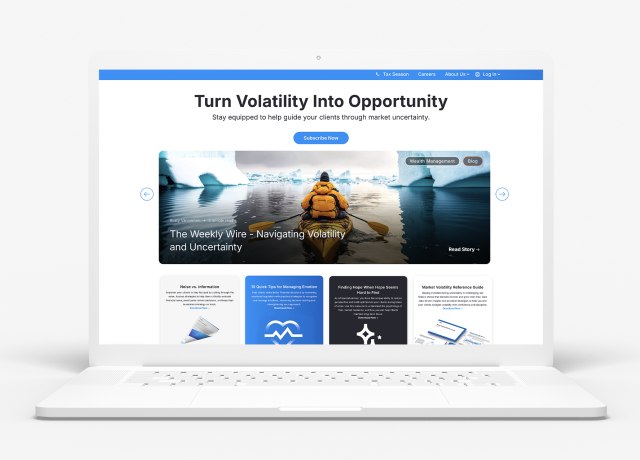During the BBC documentary Seven Worlds, One Planet, there is footage of an albatross parent that is forced to leave the nest momentarily to find food for its chick. While it’s gone, the chick is blown out of the nest, where the parent left it, by gale-force winds. The chick’s survival is at risk, due to the weather conditions and decreased shelter, but for another more unexpected reason: albatross parents identify their chick by location, not sight or sound.
When the parent albatross returns to the nest, with food in its crop for the chick, and finds the nest empty, it seems to fixate on the absence of the chick from the nest. Despite the chick being mere inches away, struggling to get back into the nest: the parent’s laser-focus on “chick not being in the nest” constructs the very tunnel-vision that puts the chick at real risk of death.
There’s a parallel in this for how we navigate the distress invoked by market disruption: focus on the growth of our goals remains important, but if we develop tunnel-vision on the current economic snapshot, we risk behaviors that will, ironically, starve out our success. If, instead, we can feed our focus but zoom out to have broader perspective, we insulate against the danger of impulsive action that betrays our best interest. Let’s look at how we can do this:
Empathy Before Strategy
Periods of market turbulence can be terrifying for any investor, and the fears are valid but can’t drive decision-making. The uncertainty of what happens next can instigate anything from paralysis to reactionary insistence we have to do something. This bias to take action leaves us liable to impulsive decision-making that actually risks returns in the long-run. It’s natural for investors to feel panic in an episode of volatility: without an advisor, 76% of investors indicate struggle to have peace of mind in managing their investment. That drops to 20% for investors that have financial advisors3: advisors make the difference between the clients that react reflexively to this fear, rather than reflecting and acting in accordance with long-term goals. Why is this, and how can we be part of that subset? Same reason investors prefer human advisors to tech-only solutions: the ability to empathetically steer investors towards their goals, even when waters are choppy.
It’s essential to resist the urge to immediately jump into problem-solving mode or soothing the client with promises of future returns during times of market volatility. Instead, start by empathizing with your clients’ fears. It can feel counterintuitive to engage with an investor’s panic, but rather than amplify it, empathetic exploration of investors’ experience engenders a sense of partnership and understanding necessary for investors to become calmer and constructive. Proactively reach out to investors, normalize the fear and anxiety that often accompany market downturns, and create conditions that let clients feel heard and understood. By starting with empathy and validation, you’ll be better equipped to guide them through the downturn with a sense of trust and clarity.
In due course of empathizing and validating these fears, acknowledge explicitly that uncertainty is inherently stressful and a reaction of distress is natural. Reassure them that while the future may be unpredictable, you are committed to staying agile and pivoting as necessary to help them stay focused on their long-term financial goals. This pairing of acknowledgement and support has been shown key, in helping people align behavior with best-outcome in uncertain conditions: Physicians often help patients work through uncertainty around prognosis, and studies have demonstrated that pairing acknowledgement of uncertainty with reassurance and faith for their patient in staying the course, leads to best outcome, strengthening the client’s resolve and enhances their ability to weather challenges.
Reiterate to your clients that you are partners in this journey, navigating the ups and downs together. This might include steps, such as:
- Acknowledging their portfolio may not be where it has been in the past
- Restating that distress around that can be natural
- Contextualizing the distress in terms of their wider goals:
- Assess if they are still on track towards their financial goals in terms of behavioral consistency with things such as contributions or spending
- Reviewing which behaviors are consistent with key objectives such as growth, diversification, and long-term stability
From this position, we’re ready to shift into strategizing.





























